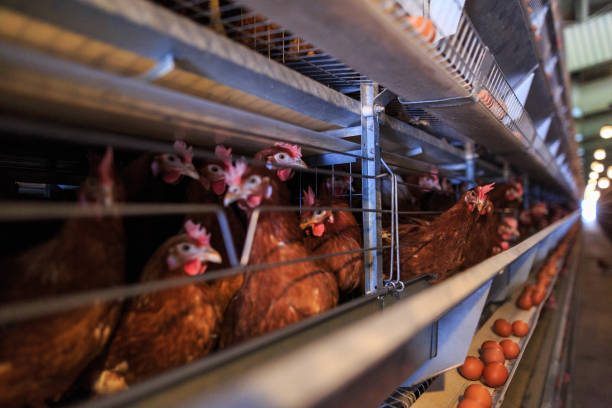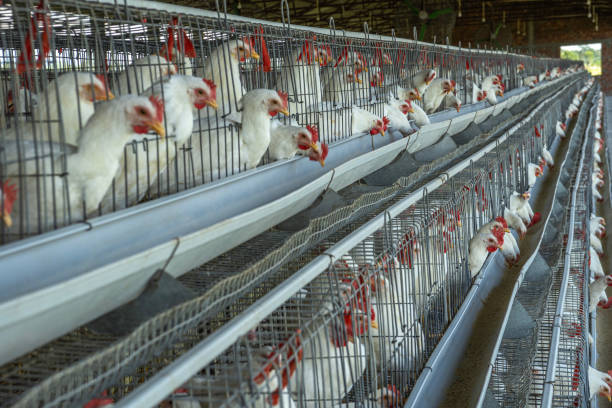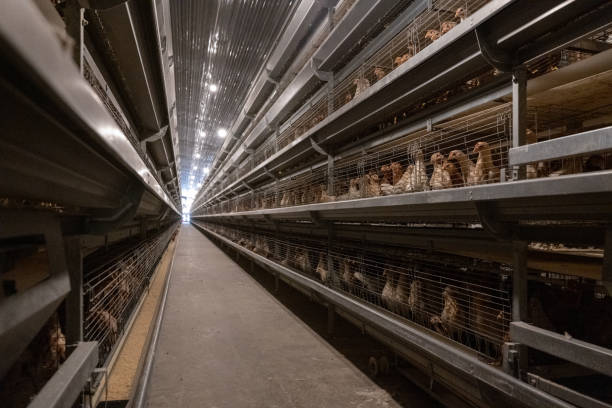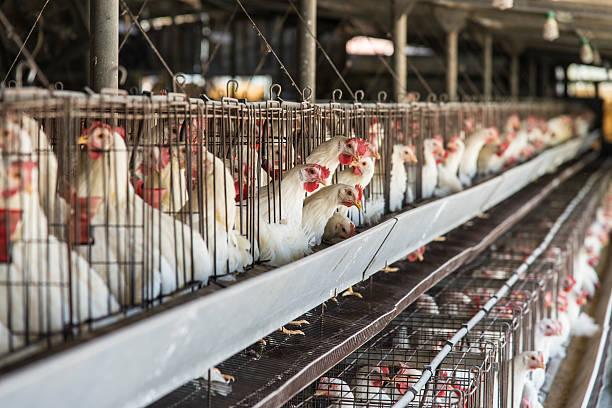
Broiler Farming Cage Systems in South Africa
Broiler Farming Cage Systems in South Africa

South Africa’s poultry industry has been growing steadily over the past decade, driven by rising protein demand and urbanization. As farmers look for ways to scale production while managing costs and biosecurity risks, broiler farming cage systems have emerged as a smart, modern solution. At Livi Machinery, we’ve worked with farms across Africa to design and deliver high-performance broiler cage systems that maximize space, improve bird health, and boost productivity. In this article, we’ll explore how these systems are transforming chicken farming in South Africa—and why more producers are making the switch from floor-based to caged broiler production.
Whether you’re just starting out or expanding your existing operation, understanding the benefits, design options, and long-term advantages of cage systems can help you make smarter decisions for your farm.
Why Broiler Cage Systems Are Gaining Popularity in South Africa
Traditionally, most broiler farms in South Africa use deep litter floor systems where birds are raised directly on bedding material like wood shavings or sawdust. While this method is low-tech and familiar, it comes with serious drawbacks—especially when scaling up. Issues such as ammonia buildup, uneven growth rates, higher disease transmission, and inefficient feed conversion can severely impact profitability.
That’s where broiler farming cage systems come in. These tiered, ventilated systems elevate birds off the ground, providing better air circulation, reduced contact with waste, and improved hygiene. Because cages are stacked vertically (usually 2–4 tiers), they dramatically increase the number of birds per square meter—without sacrificing welfare or management ease.

We’ve seen firsthand how switching to cages can reduce mortality rates by up to 30% and cut feed consumption by 10–15%, thanks to less energy spent by birds moving around and better temperature control. For commercial producers under pressure to meet supply demands and pass strict health audits, these gains are game-changing.
Another major reason for the rise in cage adoption is labor efficiency. With automated feeding, watering, and manure removal options now available, one worker can manage thousands more birds than in traditional setups. This is crucial in South Africa, where skilled farm labor is often in short supply and wages are rising.
In provinces like Gauteng, Mpumalanga, and the Western Cape—where land prices are high and space is limited—cage systems let farmers do more with less. They’re especially well-suited for peri-urban areas where biosecurity and odor control matter.
Key Features of a High-Performance Broiler Cage System
Not all broiler cages are created equal. The success of your system depends on smart design, quality materials, and integration with other farm systems. Here’s what sets advanced broiler farming cage systems apart:
First, construction quality is critical. Cages must withstand years of heavy use, cleaning, and exposure to moisture without rusting or warping. That’s why top-tier manufacturers like Livi use galvanized steel wire with anti-corrosion treatment. The mesh size and spacing are carefully designed to support young chicks while allowing droppings to fall through easily—reducing footpad burns and ammonia levels.
Second, tier configuration plays a big role. Most farms in South Africa opt for double or triple-decker systems. Triple-tier systems offer maximum density but require taller buildings and stronger ventilation. Double-tier cages are easier to maintain and allow quick access to all levels—ideal for smaller operators.

Third, integration with automation takes cage systems to the next level. Automated feed lines ensure all birds get consistent nutrition at the right time. Nipple drinking systems prevent spillage and contamination. And perhaps most importantly, automatic manure belts remove droppings daily, protecting bird health and reducing labor.
Let’s not forget climate control. South Africa has diverse weather patterns—from hot, dry conditions in the Northern Cape to humid summers in KwaZulu-Natal. A good broiler cage system works hand-in-hand with tunnel ventilation, cooling pads, and fans to keep birds comfortable year-round. Overheating is a major cause of poor weight gain and mortality; proper airflow between cage layers prevents hot spots and improves uniformity.
Finally, scalability and modularity matter. Our clients often start with a single house and expand over time. Modular cage designs mean you can add sections later without redesigning the whole layout. This flexibility makes cage systems future-proof and easier to finance incrementally.
At Livi Machinery, we customize every system to local conditions—whether it’s adapting slope angles for natural drainage or reinforcing frames for harsher climates. We also train teams on installation and maintenance so farms can run smoothly from day one.
Making the Switch: Costs, Challenges, and Long-Term ROI
One of the biggest concerns farmers have when considering broiler cage systems is the upfront cost. It’s true—a fully automated cage setup costs more than basic floor housing. A typical investment might range from ZAR 1.8 million to ZAR 3.5 million depending on size and automation level. But what matters isn’t just the price tag—it’s the return on investment.
Here’s where the numbers speak for themselves. Let’s say you run a 10,000-bird floor pen. With average live weight of 2.5 kg and FCR of 1.6, feed alone could cost upwards of ZAR 4,000 per cycle. Now imagine cutting FCR by 0.2—which cage systems routinely achieve through better environment and nutrition control. That’s immediate savings of hundreds of thousands per year.
Better yet, cage systems allow for more cycles annually due to faster house turnover. No need to clean and replace thick litter beds—just sanitize the trays and refill. Many of our clients go from 4–5 cycles to 6–7 per year, directly increasing annual output without additional buildings.
Health improvements also translate into lower vet bills and fewer medication costs. With lower ammonia and pathogen levels, respiratory issues and leg problems drop significantly. Birds grow faster and more uniformly, resulting in higher first-grade classifications at processing plants.
Of course, there are challenges. You’ll need reliable electricity for automation. Water quality affects drinker systems. And staff will need training to handle new equipment. But these are manageable with the right planning partner. We’ve helped dozens of farms across Africa transition smoothly, offering everything from site assessment to after-sales support.
The bottom line? While floor systems may seem cheaper today, cage systems offer far greater profitability over 5–10 years. They’re not just about raising chickens—they’re about running a modern, sustainable agribusiness.
Is a Broiler Cage System Right for Your Farm?
If you’re focused on efficiency, consistency, and scaling your poultry business in South Africa, the answer is likely yes. Broiler farming cage systems aren’t just a trend—they’re becoming the standard for professional, competitive producers.
They address real pain points: space constraints, labor shortages, disease outbreaks, and inconsistent performance. Whether you’re supplying local markets, supermarkets, or export chains, delivering healthy, uniform birds on schedule is non-negotiable. Cage systems give you better control to make that happen.
At Livi Machinery, we don’t just sell cages—we deliver complete solutions. From initial consultation to technical drawings, manufacturing, shipping, and on-site installation guidance, we’re with you every step of the way. Our team speaks English, Afrikaans, and several African languages, so communication is never a barrier.
Ready to see how a modern broiler cage system can transform your farm? Drop us a message with your farm size, location, and goals. We’ll send you a free feasibility report and 3D design concept tailored to your needs—no obligation. Let’s build a smarter poultry future together.
